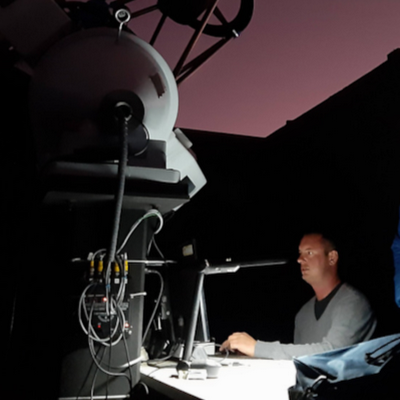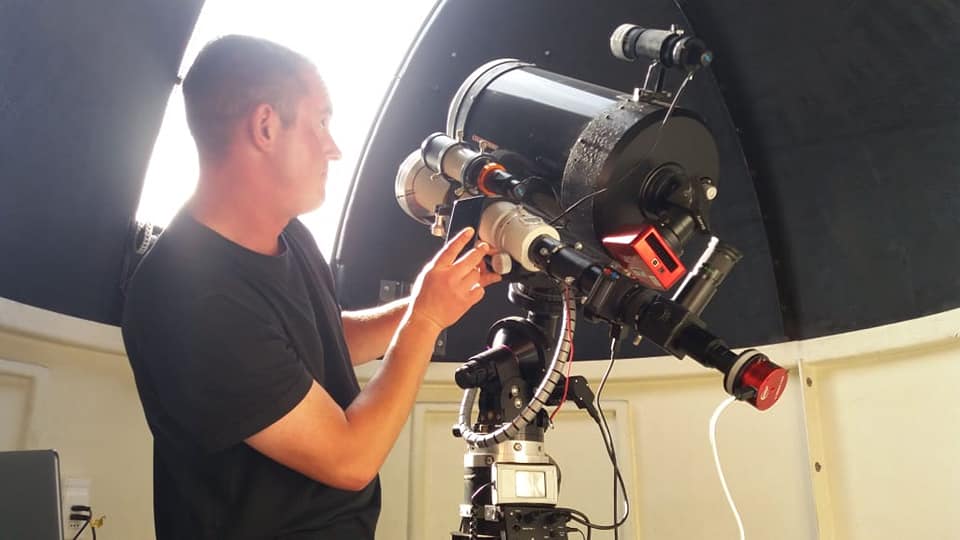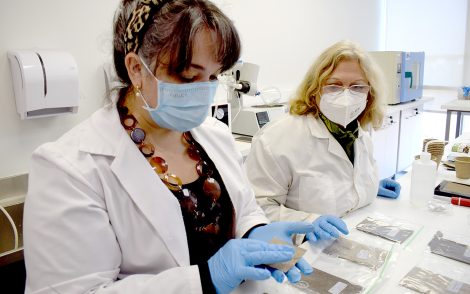Agranda texto:
When Jeremy Tregloan-Reed was five years old, his grandparents gave him a science encyclopedia. He barely remembers the volcano on the cover—but vividly recalls the final pages about the solar system. That spark of curiosity would shape his life. Today, he is an astronomer and academic at the University of Atacama in northern Chile, a region known for its clear and dry skies. But that view is under threat from a growing, invisible problem: light pollution.
In the last ten years, artificial light has become one of astronomy’s biggest problems. It is not only about the glow from cities and towns anymore. Today, satellites in low-Earth orbit are also affecting telescope observations. With thousands already launched and more coming, their reflections are disturbing how astronomers collect data. As Tregloan-Reed explains, this wasn’t an issue for previous generations. Now, it could change the way we study space.
Chile plays a central role in this challenge. The Atacama Desert, in the northern region of the country, is one of the best places on Earth for astronomy thanks to its dry climate, high elevation, and stable atmosphere. But new sources of light pollution from the ground—especially from mining and industrial projects—are starting to affect this advantage. One of the most controversial cases is the INNA Project, a planned green hydrogen facility near important observatories.
The problem goes beyond science. According to a 2024 report from the European Southern Observatory, “Light pollution has considerably grown during the past decades but has reached a new intensity since 2019, when deployment started of the first large constellations of satellites which are intended to provide global broadband internet.” For Tregloan-Reed, protecting the night sky is not only about astronomy—it’s also about public responsibility. Scientists, he says, need to help people understand what is at stake and why the skies matter.
What Light Pollution Really Means
For a long time, light pollution mostly meant artificial light from the ground—like streetlights, stadiums, or factories. This kind of ground-based light makes the night sky brighter and reduces visibility for telescopes. But now, satellites have become another problem. Thousands of them orbit Earth and reflect sunlight, creating trails that pass through astronomical images.
In the past, observatories were built far from cities to avoid this problem. Chile was perfect for that, especially the Atacama Desert with its low population. “Ten years ago, when astronomers talked about light pollution, we were talking about the ground,” says Tregloan-Reed. But with new projects like Starlink, things changed. Satellites in low-Earth orbit fly much closer to the planet than others that stay fixed over one point, like geostationary satellites —making them up to 4000 times brighter. And since they move across the sky, they are visible from anywhere.

Jeremy Tregloan-Reed explains that, unlike the short-lived Iridium flares of the past, today’s satellites reflect both bright flashes (from their solar panels) and diffuse light from their surfaces. This combination makes them visible even without a telescope. “Technically, sadly, it is an issue,” he says. Astronomers now need to account for these moving lights in their data collection, which adds a new challenge to an already complex job.
The International Astronomical Union has raised concerns that satellite light pollution will affect both professional and amateur astronomy. Observatories have already shared images showing data ruined by satellite reflections. Jeremy says that estimates from the U.S. FCC and the International Telecommunication Union (ITU) indicate that by 2035, there could be more than half a million satellites in orbit—a figure he also mentioned during his interview with DESAFÍA. The international community is discussing regulations, but progress remains slow.
As Tregloan-Reed notes, national governments have limited power in this matter. “Chile can’t turn around to these companies and say, ‘You can’t fly your satellites hundreds of kilometres above us,’” he explains. “What Chile can do is regulate light pollution from the ground.” And with sky-based pollution expected to increase, reducing terrestrial light sources is becoming more important than ever.
Mining, Satellites, and the INNA Project
Chile’s Atacama Desert is one of the best places in the world for observing the universe. Tregloan-Reed remembers his first time observing there, during his PhD research back in 2010. “I’ve seen the night sky in the UK, in dark areas, but compared to the Atacama, they’re nothing,” he says. “Here, you get to see magnitude seven stars, the galactic bulge, the Magellanic Clouds—it’s just like, wow.”
However, even this remote area is being affected. While Chile does not have many large cities in this region, it has many mining operations that work 24 hours a day. To ensure safety and security, these sites use intense artificial lighting. The dry air and dust from heavy machines make things worse. “Heavy machinery kicks a lot of dust up, which then scatters the light,” says Tregloan-Reed. “So the effect of the light pollution from the light sources is even worse because it scatters more.”

Tregloan-Reed explains that this change is visible over time. “I’ve seen photos from Paranal taken in the 1990s, early 2000s, and then onwards,” he says. “You can see the yellow fuzz low on the horizon near Antofagasta, or where certain mines are located—and it gets bigger over time.” These visual records suggest a gradual loss of sky clarity. Now, the planned INNA Project could bring even more dust, light, and industrial activity near observatory zones.
Although green hydrogen is a positive step in the global energy transition, location matters. “Green hydrogen is a fantastic project,” says Tregloan-Reed. “The problem is where they want to place it.” The INNA Project would be built near Paranal and the future Extremely Large Telescope (ELT). For scientists, the solution is simple: move it. “From the scientific community’s point of view, the only way is to build the plant in a completely different part of the country,” he says. Countries like Australia and South Africa have already passed dark sky protection laws. Chile, he warns, should do the same.
Tregloan-Reed points out that Chile does have laws in place to control light pollution. The concern, he says, is that countries like Australia and South Africa also offer excellent conditions for astronomy. “If projects such as INNA are allowed, many of the international observatories will wonder if investing in Chile is still a good idea,” he explains. “If the amount of dust and light pollution from the INNA Project is as bad as we fear, then the Atacama night sky will no longer be competitive with the other two southern hemisphere countries, and an exodus of the international community and their facilities may follow.”
From Childhood Wonder to International Advocacy
Jeremy Tregloan-Reed’s interest in space started with a childhood fascination—an old science book that showed the planets. That passion led him to complete an undergraduate Master’s in Physics, Astrophysics, and Cosmology, followed by a PhD in Astrophysics at Keele University in the UK. Over time, his academic focus turned to exoplanets—planets outside our solar system—and the many ways their atmospheres can reveal what they’re made of.
In 2014, he joined NASA’s postdoctoral program at the Ames Research Center in California. There, he worked on how certain gases, like oxygen, can appear in a planet’s atmosphere without meaning that life exists. “You can create oxygen in an atmosphere without life being there,” he explains. “Just look at the early Earth before the great oxidation event.” His work contributed to a broader understanding that scientists must look for combinations of gases, not just one, when searching for signs of life.

Tregloan-Reed arrived in Chile in 2019, just before the pandemic. He began a postdoc at the University of Antofagasta, later joining the University of Atacama, where he continues his exoplanet research in Chile and advises PhD students. But a new concern soon emerged. “Just before the pandemic hit, Starlink launched their satellites. You had this train of 60 lights going across the sky, visible even from cities. The astronomical community went crazy,” he says.
That moment marked a shift. Tregloan-Reed started tracking satellite impacts from the ground, gathering data to support the case for regulation. He now works with the United Nations Committee on the Peaceful Uses of Outer Space (COPUOS), which is trying to develop international rules to limit satellite brightness. “The only way forward is international regulation,” he says, though he knows it may take years or decades to happen. In the meantime, he believes countries like Chile should focus on what they can control—light pollution from the ground.
Tregloan-Reed also believes scientists must connect with the public. “It’s our job to not just sit here in our universities, in our offices, just being private,” he says. Public talks, school programs, and outreach efforts help people appreciate what’s at stake. If citizens understand the value of the night sky, he argues, they’ll be more likely to support policies that protect it.



